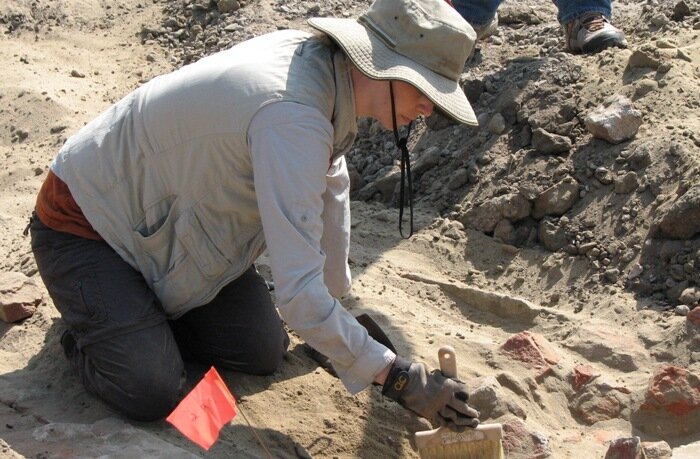INSUBCONTINENT EXCLUSIVE:
TEHRAN-- Laboratory research is still underway on some 200 ancient human skeletons, formerly discovered from a historical site and cemetery
in Gilan, the provincial tourist chief stated on Tuesday
Currently, some 200 ancient human skeletons, which had been discovered in Liar-Sang-Bon, a historical site and cemetery in the Amlash
region, are still under investigation at an anthropology laboratory in Gilan province, Vali Jahani said.The experiments performed in this
lab on a set of exposed skeletons provide information about subjects such as the shape of the bones and teeth of the people who resided in
those times, along with the type of food, their height, and face, and whether they were indigenous or non-indigenous, Jahani explained.He
made the remarks during a nationwide conference attended committed to the most recent archaeological accomplishments, IRNA reported.There
are six primary historic settings in Gilan
The oldest [existing] monoliths relate to the Seljuk period and the early Islamic duration, and most of the historical buildings in Gilan
are related to the Qajar duration and the late Safavid date, the main discussed
Before the Qajar and Safavid era, there were many structures in Gilan, however due to its [humid] climate, they have actually been damaged
and based upon archaeological excavations, we can acquire important info from such relics and monuments
According to Jahani, DNA samples drawn out from the skeletons expose that human remains date back to the Parthian (247 BC-- 224 CE) and
Sassanid (224 CE-651) periods.Studies and experiments on the found skeletons, which have been performed by professionals from the University
of California, and the University of Copenhagen in Denmark, reveal all the skeletons were natives of the region, the official
said.Liar-Sang-Bon was at first determined in [the Iranian calendar year] 1391 (March 2012-March 2013) while its associated mapping and
demarcating tasks were finished in 1393 and its very first season of excavation started in 1395, Jahani said
The archaeological site of Liar-Sang-Bon is among the most considerable cemeteries in Gilan
And the website went through a specific five-year historical study, which was started in 1391 under my supervision ..
The outcome was the discovery of about 100 ancient tombs, a substantial variety of historical things, and very crucial details about the
style and custom of burial of the people of that period
By conducting dating experiments in a relative approach, it was determined that the ancient website of Liar-Sang-Bon dates from the Parthian
and Sassanid periods, he said.Amlash was a small village in southeastern Gilan
The name originates from the close-by Alborz valleys, where historical artifacts were found throughout excavations.The discovered artifacts
range in date from the late 2nd millennium BC through the Partho-Sasanian period, however most of the objects are dated to the 9th-8th
century BC.The dating and suggesting of the recognized objects (bronze weapons and animal figurines, human statuettes of terra cotta and
bronze, pottery animal effigy vases, and burnished black, gray, or orange pottery vessels) are made complex by inadequate historical
contexts.Bounded by the Caspian Sea and the Republic of Azerbaijan on the north, Gilan, in the far past, was within the sphere of impact of
the succeeding Achaemenid, Seleucid, Parthian, and Sassanid empires that ruled Iran till the 7th century CE.Sophisticated Rasht, the capital
of Gilan province, has actually long been a weekend escape for locals of Tehran who are seeking to sample the well-known local food and
hoping for some pluvial action-- its the largest and wettest town in the northern region
Gilan is divided into a seaside plain, including the large delta of Sefid Rud and nearby parts of the Alborz mountain range.AFM

